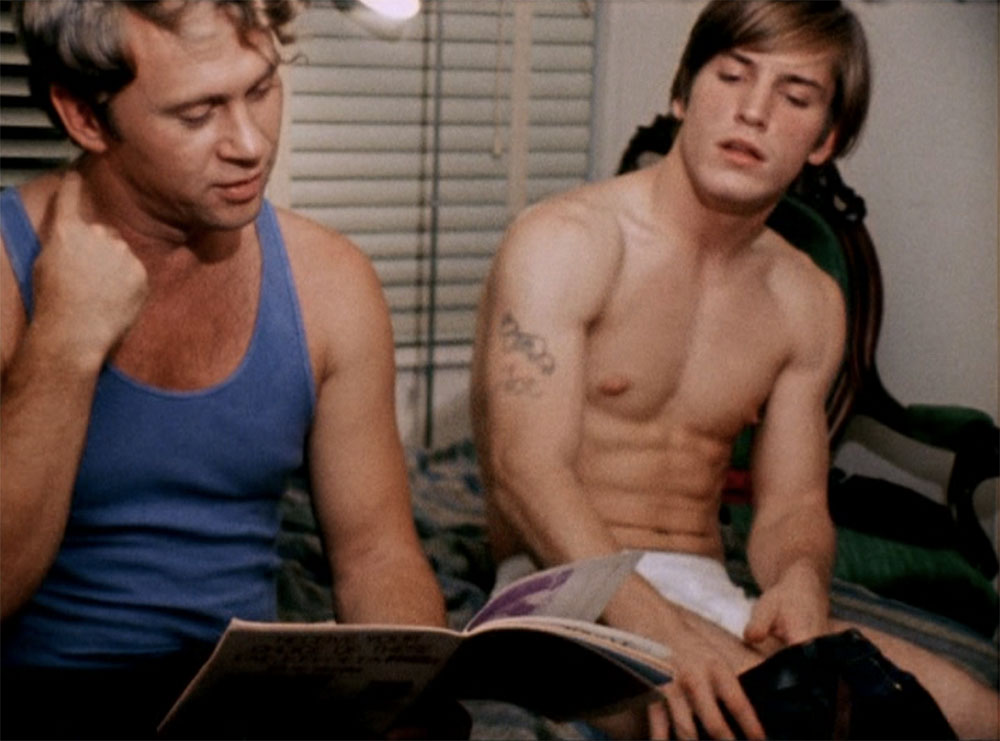Paul Morrissey’s Flesh (1968), also known as Andy Warhol's Flesh, opens on a close-up of Joe Dallesandro’s pasty mug half-buried in a blue and white pillow and perfectly centered in frame. He’s not wearing a shirt, a detail that remains constant throughout the film’s breezy 89-minute runtime. However, he sports a thin gold chain, along with a perfectly combed head of hair that suggests he just fell asleep. It seems that even while resting, Dallesandro must always look glorious. The need to place him in as many situations as possible where he can be disrobed, whether one attributes it to Warhol or Morrissey, is what propels Flesh forward even when it feels like it's spinning its wheels.
Much like Warhol, Morrissey demonstrates a clear interest in both minimalism and duration; every scene purposely feels like it's being stretched to its breaking point. Actors aimlessly mutter their lines to one another and the film abounds in white flash frames that mark whenever the camera stops recording, adding to the sense that you’re watching a film come together in real time. But Morrissey shows a far greater appreciation for camp than his filmmaking partner. Though the film largely embodies a free-flowing “shit happens” ethos, which is best encapsulated by Dallesandro’s iconic monologue about how “nobody’s straight” and people simply “do what they have to do,” the occasional eye-bulging imagery that’s conjured up by Morrissey—such as our denim-clad lead getting head with his back facing the camera—is so outrageous that it borders on the absurd, puncturing through the monotony of life in the process. After all, Warhol crafted pieces of capital-A Art that were exhibited in New York City art galleries, while Morrissey—whose collaborations with Warhol include San Diego Surf (1968), in which leading man Taylor Mead ends on the receiving end of a golden shower—went on to make Trash (1970).
Morrissey, an archconservative who once referred to our 44th President as “Mr. Comrade Obama,” has a strong fondness for the McCarthyist director Sam Wood’s 1930s melodramas, and much like a piece of classic Hollywood filmmaking, there is something of a structuring principle to the shape of Flesh. After a long day of hustling in order to pay for an abortion— which is referred to once at the start of the film and never again—Dallesandro is, justifiably, rather tired. He lays next to his two bedmates on his stomach, with his bare ass exposed to the camera in a similar manner to how we saw him when the film began. The framing evokes a Möbius strip of sorts, suggesting that he'll just wake up the next day and repeat the exact same bullshit all over again.
Flesh screens tonight, April 17, at the Roxy on 16mm as part of “The Gospel According to Paul Morrisey.”



